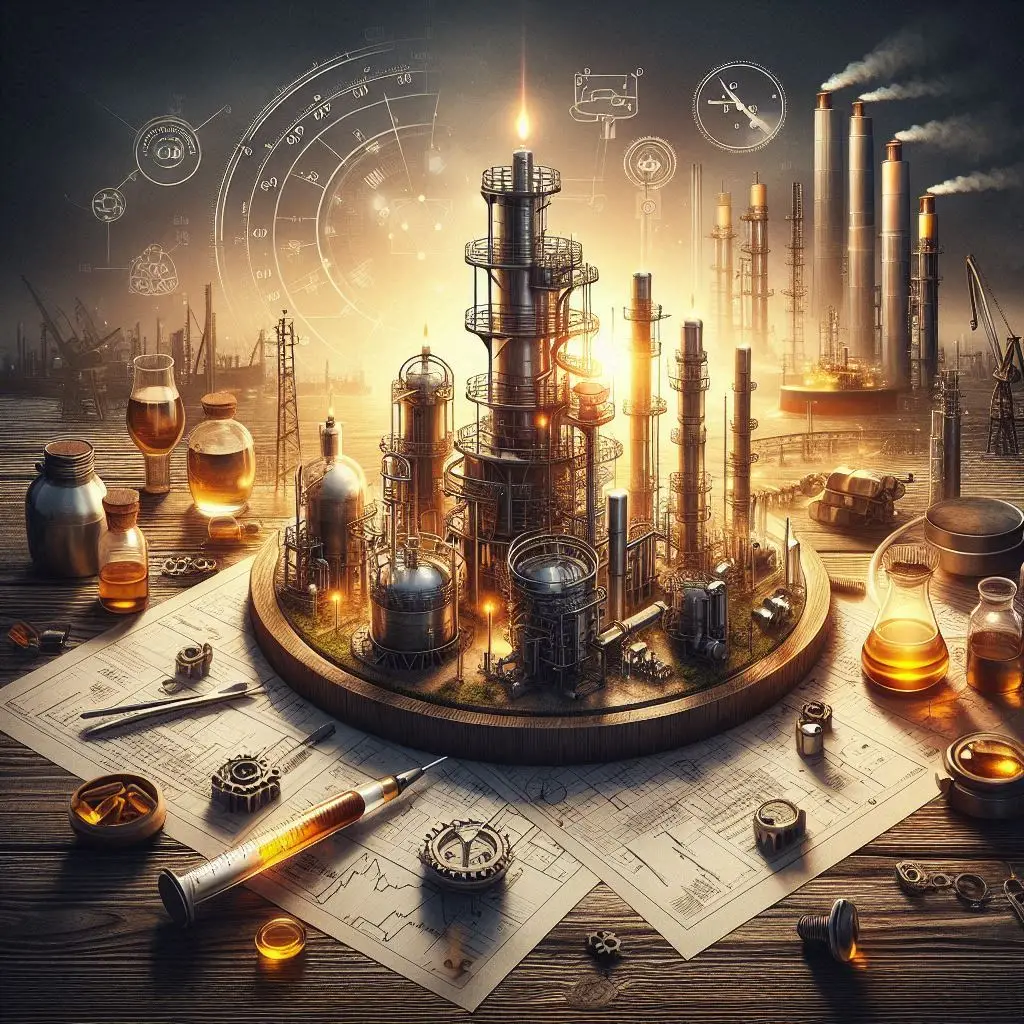
crude oil distillation
This article, crude oil distillation, explores the fundamentals and procedures involved in the distillation of crude oil, as well as its relevance and the associated environmental and financial repercussions.
The distillation of crude oil is the foundation of the petroleum industry. It is the first stage in the process of transforming this rich resource into a wide variety of useful goods. The method takes use of the fact that different types of hydrocarbons have different boiling points in order to separate the different types of hydrocarbons into their own unique fractions. This allows for the manufacture of transportation fuels, petrochemical feedstocks, and other important products. The distillation of crude oil, despite its importance to the economy, is associated with a number of environmental issues, the most pressing of which is the production of greenhouse gases.
The petroleum sector, particularly crude oil distillation, is at a crossroads right now as the globe struggles to come to terms with the need of making the shift to energy sources that are cleaner and more sustainable. It is still a problem that will have a significant influence on the future of energy and industry to strike a balance between the economic advantages of this resource and the requirement to decrease its impact on the environment. It is possible that technological advancements in refining, in conjunction with a worldwide move toward cleaner energy sources, holds the key to a future that is more sustainable and ecologically responsible.
Crude oil, sometimes known as "black gold," is a resource that is both essential and limited, and it is one of the primary contributors to the functioning of the contemporary world. The distillation of crude oil is the first stage in the process of changing this complicated combination of hydrocarbons into a variety of useful products. This process is known as refining and it is performed on crude oil.
Crude Oil Composition
Mostly made up of carbon and hydrogen atoms, crude oil is a complex combination of hydrocarbons that also contains various amounts of sulfur, nitrogen, and oxygen. From one oil reservoir to the next, its composition may fluctuate dramatically, giving crude oils unique qualities and attributes. Due to this variability in composition, a refining procedure that can separate and purify the different components in order to satisfy certain market needs is required.
Procedure for Distilling Crude Oil
The first and most important step in the refining process, crude oil distillation divides the different types of hydrocarbons in crude oil according to their boiling points. An oil refinery is a huge industrial building where the process usually takes place. The following are the main elements of this process:
Crude Oil Feedstock: To make it simpler to pump and handle, the crude oil is first heated and kept in tanks.
Distillation Column: Also referred to as a fractional distillation column, the distillation column is the central component of the distillation process. It is made up of a vertical tower that is loaded with trays or packaging supplies. The temperature in the column varies, with the top temperature being the lowest and the bottom temperature being the highest.
Fractionation: Before being added to the distillation column, crude oil is heated in a furnace. The heated crude oil vaporizes as it enters the column. At certain tray levels, the vapor cools and condenses into liquid as it climbs through the column. Based on the boiling point of the crude oil, each tray or packing material in the column is made to collect a certain proportion of the oil.
Separation: Different hydrocarbon fractions are separated and gathered on the trays at different heights inside the column as the vapor rises through the column and condenses. Higher boiling point heavy fractions condense at the bottom of the column, whereas lower boiling point lighter fractions condense at the top.
Gathering: The divided portions, referred to as "cuts," are taken out of the trays and delivered to be processed or stored further. Gases, naphtha, kerosene, diesel, and leftover oil are among these reductions.
Importance of Distilling Crude Oil
Crude oil distillation is an essential procedure that has significant effects on the world economy, the generation of energy, and the environment.
Energy Production: Fuels for transportation, such as gasoline and diesel, which are essential for cars, trucks, and airplanes, are the main products of crude oil distillation. The petroleum products that power our everyday life, such as heating oil and aircraft fuel, are also produced by this process.
Petrochemicals: The lighter fractions from the distillation of crude oil are used as feedstock for the petrochemical sector, which produces chemicals and materials utilized in a variety of industries, such as textiles, plastics, and medicines, in addition to fuel.
Economic Value: Distillation adds value by generating a broad variety of goods, and crude oil is a major source of income for oil-producing nations. It is impossible to exaggerate the petroleum industry's economic importance.
Environmental Impact: Because the refining process involves the production of greenhouse gases like carbon dioxide and methane, crude oil distillation has an impact on the environment. In addition, the oil industry's environmental impact includes the processes of exploration, drilling, transportation, and product combustion.
https://www.novintrades.com/products/12?title=crude-oil

